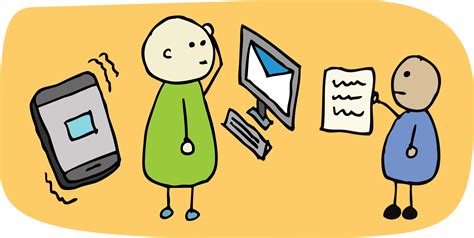Effective Communication skill
In my previous blog posts, effective communication is here. Are you communicating effectively? To understand communication gaps, I initiated a discussion on a very important topic – Communication skills for a project environment. We will now take this discussion to the next level to explore it in detail. First, we will take a closer look at the communication model elements, types of communication that can occur in a project environment, different methods that can be employed, various communication format and their suitability and finally, build an understanding of factors that may affect the information flow and communication.
PMI places a great deal of emphasis on communication planning and management, as without it may lead to many problems like delayed message delivery, information delivery to the wrong audience, incorrect communications, poor communications, and misunderstood communications. These may risk stakeholder engagement, conflicts and many other potential issues that may cause project delays and failure.
According to the PMBOK guide, “Project Communications Management includes the processes required to ensure timely and appropriate planning, collection, creation, distribution, storage, retrieval, management, control, monitoring, and the ultimate disposition of project information.” A communication management plan aims to offer information in the correct format to the right audience timely with sufficient impact. Moreover, effective communication serves as a bridge between diverse stakeholders from different cultural and organisational backgrounds and levels of expertise and perspectives and interests. And therefore, it is of utmost importance to tailor the communication management plan for the project’s success.
Communication Model for Effective Communication
Regardless of the message, standard communication model can be applied to any communication activity on our project. The sequence of steps in such a conventional communication model is – Encode, Transmit Message, Decode, Acknowledge, Feedback or Response. In an elementary model, it comprises of:
i) Encode
ii) Transmit
iii) Decode
iv) Noise
v) Acknowledge
vi) Feedback/Response (Optional)
Encode
Communication starts with the sender, who encodes or, in other words, converts his thought and ideas into a language. The message may take many forms – written, oral, visual, sign, or even body language. Regardless, all sent messages are encoded.
Transmit Message & Noise
Information is sent via a communication channel or medium. The message transmission process may be affected by several factors collectively known as noise. These factors may include distance, the technology available/familiarity, inadequate infrastructure, lack of background information, cultural differences, personal ability to encode correctly, etc.
Decode
The recipient receives the message and attempts to translate it back. In other words, they have to interpret what they think you meant. Therefore this interpretation/decoding process is prone to inaccuracy due to transmission noise factors.
Noise
Noise refers to the factors that might hinder the ability of the receiver to understand the message. Some of the most common noise are – language, culture, environment, distance, technology, background information, and level of experience/expertise.
Acknowledge
The recipient confirms receipt of the message and conveys neither agreement nor understanding at this stage. It is somewhat like a message delivery indication in your phone apps.
Feedback/Response (Optional)
Once the message is received and understood (decoded), the recipient then encodes their thoughts and ideas and transmits
them back to the initial sender. In a way, it is the start of a new communications cycle as this is also prone to noise/disturbances.
Sender/Receiver Responsibilities
The sender must provide clear and complete information for efficient and effective communication flow. Have you ever had an example of where you meant to say one thing, but it just came out a little wrong? That would be an example of encoding not going so well. As a result, we are restricted in our ability to convey our thoughts to others. Recipient responsibilities include – ensuring complete information is received & grasped and then sending a message acknowledgement receipt back to the sender.

Communication Methods & Technologies
Interactive communication is a bi/multi-directional flow of information; its example includes – meetings/conferences and phone calls.
Push Communication is usually targeted at specific recipients, in this type of communication, emphasis is on distribution and not comprehension. This is a one-sided flow of information. Its example includes – emails, letters, blog post, reports, press releases etc.
Pull Communication best suits when dealing with many audiences and a vast amount of information. This method keeps information in a central location from where others can retrieve it. It is the responsibility of the recipient to access/pull the information stored. Examples of such communication are Intranets portals, E-Learnings, Databases, Knowledge Repositories and so on.

Communication in the Project Environment
There are two primary communication types – formal and informal, communicated verbally/orally or written.
i) Formal Written – Management Plans, Project Charter
ii) Formal Verbal – Presentations, Speeches
iii) Informal Written – Emails, Handwritten notes
iv) Informal Verbal – Meeting, Conversation, Brainstorming
Formal communication requires a high level of professionalism and significant preparation. Examples include- reports, meeting minutes, briefings & status presentations.
Typically Informal Communication takes place throughout the flow of project work more frequently. These are usually spontaneous and less deliberate than formal methods. Its examples include -emails, memoranda, and corridor/water-cooler discussions.

Flow of Communication
The flow of communication determines the direction of the communication flow, it can be one of the following:
i) External
ii) Internal
iii) Vertical
iv) Horizontal
In External Communication, the Project manager represents the team when speaking with others like customers, vendors, other project teams, third-party organisations and so on.
Internal communication occurs when communicating information with the project team. It may include all team members, a subset, or an individual.
Vertical communication occurs when communicating with superiors or subordinates, it is also known as upward/downward flow of communication, for instance, requests, status reports and directives.
Technical and conceptual discussion with organisational project peers is sideways/Horizontal Communication. The instances of expert judgment and team meeting announcements are two examples of horizontal communications.
Communication blockers
Information communicated may be influenced due to several factors. We must consider and carefully examine our communication plan and strategy accordingly. Answering these questions will help model a robust communication plan for your project environment. Let’s explore some of the material questions around it:
Urgency
We of Need should consider how quickly information is required. How valuable is the information? And finally, how often is the information communicated?
Availability of technology
Second, we should consider will the message be compatible with all recipients. And do recipients have access to the proper technology?
Sensitivity & confidentiality
Question how important is it for a message to be conveyed securely? And what security measures may be required?
Project environment
Consider if team members are located in the same place. Do they work at the same time or across several time zones? Do they use the same language or multiple languages? Are there any cultural factors that may have an influence on how they perceive the message?
Stakeholder requirements
Which stakeholders need what info? Which information is most important to each key stakeholder? And what communications preferences exist?
The information contained in the message
What content is included, with what level of detail and in what format?
Time sensitivity
When must communication activities occur/be completed? Do we have to communicate periodically, if so how often?
Justification, context and responsibility
Why is the information being shared? Who is responsible for authorising the release of info?
Technical factors
What methods of communication are made possible by the technology available to us? What style is most appropriate for the information being shared? Will communications be accessible –and easy to access – for recipients?
Other considerations
What common terms & abbreviations should be
defined? What communications restraints exist
due to legal, regulation or policy?
That’s all for this week, did you like the discussion and the topics covered? Drop me a comment, or a reply, LinkedIn or Twitter if you like. I would love to hear from you on how I can make this blog more beneficial for the prospective project manager of the future, together, we all can learn from our experiences, our mistakes and our failures.
